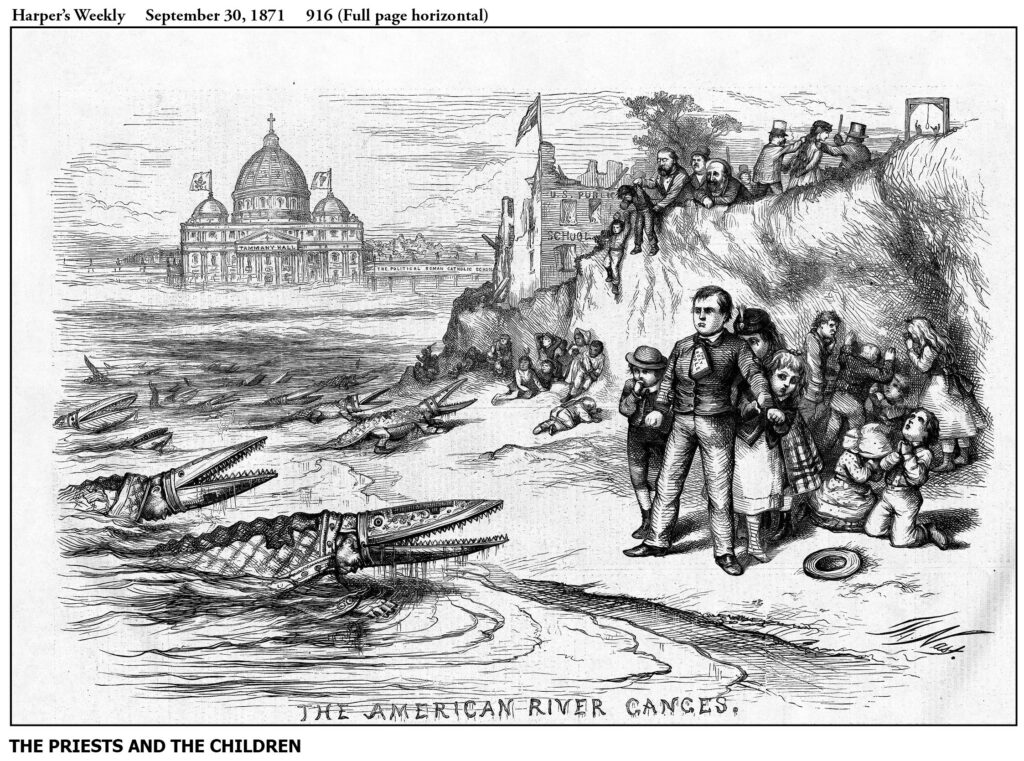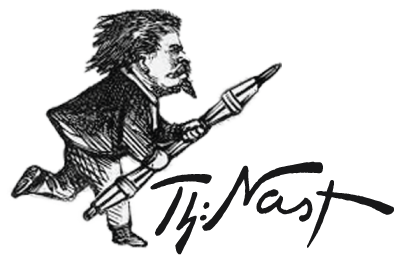
Harper’s Weekly -September 30, 1871
At the height of the Tweed campaign, Nast launched one of his all-time best — some say also his most notorious — cartoons: The American River Ganges. Sub-titled The Priests and the Children, it accompanied Eugene Lawrence’s scathing commentary of the same name on the preceding page. Lawrence pointed out that public schools in the “priest-ridden” city were crumbling while Catholic children were “taught a blind obedience to a foreign church.”
A dozen crocodiles approached a beach full of cowering Protestant school children, ready to devour them. On closer inspection, the crocodiles were Catholic bishops, their miters turned into reptilian jaws. As the glinting crocodiles closed in on their dinner, Mayor Oakey Hall, with Tweed at his side, dropped additional children from the public school to feed their appetites. Two Irish henchmen in the rear marched Columbia off to the gallows.
Across the water, Tammany Hall was annexed to “The Political Roman Catholic School.” Nast’s preliminary sketch labeled the river as “Holy See,” but he dropped the pun. The Hall was a replica of St. Peter’s Basilica in Rome, flying both Papal and Irish flags.
Four days after this cartoon appeared in print, the Times, which had been working in parallel with Nast to some extent, printed a sardonic editorial entitled Pity the Poor Protestant. “Next to the Times, which is credited with untold influence, our Catholic rulers fear the rebel Nast, who presents his incendiary ideas in such an attractive manner, that it overtaxes the ingenuity of the priesthood to contradict them” (September 24, 1871).
